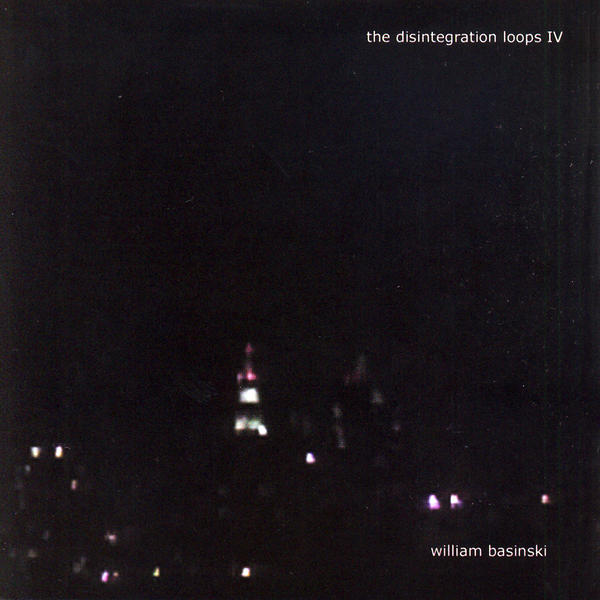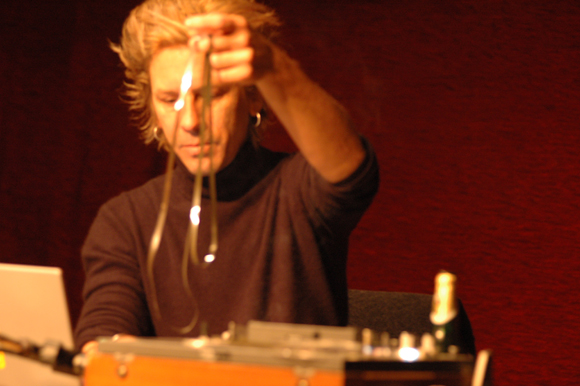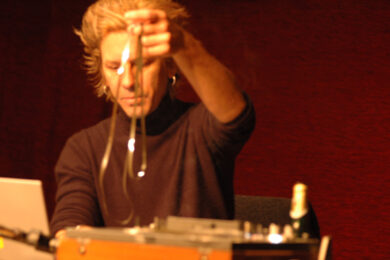The instrumental hip hop track ‘Grandmaster Flash On The Wheels Of Steel’ features a scratched in sample from The Hellers song ‘Life Story’, during which the narrator is reluctantly persuaded to relate his history by a number of children. He has a vain attempt at brushing them off: "I was born in Adams, North Dakota a long time ago, see? And now I’m lucky enough to be here with you." But the nippers won’t fall for his ruse and they demand to know "what happened in between" and, "What else happened?!"
And this little audio snippet runs through my mind when I speak on the phone to musician William Basinski. You get the impression that perhaps he’s been asked to repeat certain key bits of his story recently more times than he’s completely comfortable with.
I’m talking to him about the tenth anniversary of The Disintegration Loops albums which have just been reissued together as a box set. The tracks were created from pre-existing loops as they were transferred to digital masters, made unique by the way the magnetic tape crumbled slowly away, causing unexpectedly beautiful and affecting progressions in the music.
These new recordings were first created in Brooklyn the day before the attacks on the World Trade Center and since then, for reasons that are relatively obvious after one listens to them, they have become considered by many to be one of the most pre-eminent American artistic statements of the 21st Century so far.
Basinski sighs when he gets to this bit of the story though and charges through it in the most descriptively Spartan way possible. "On September 10, 2001 I was ready to slash my wrists. I’d had it, I was out of work, I was about to be evicted and then The Disintegration Loops descended from the sky and I didn’t know what I was going to do with them. But when I woke up in the morning the towers had been struck and the whole world changed…" He stops talking signalling that he’s ready to move onto the next bit of the interview.
It’s not that it isn’t a pleasure speaking to him. He’s a generous man and our allotted half an hour rapidly spills over into two hours on the phone and when his mobile battery dies he goes back home to call me from his landline. In fact he’s a warm and funny raconteur and in a lot of ways it’s actually more intriguing hearing about the bohemian lifestyle of struggling artists with big ideas he and his boyfriend James Elaine have lived out in San Francisco and New York over the last thirty odd years. To be honest I would have happily talked to him all afternoon even if only to find out what some of his slightly juicy sounding asides meant. ("I met Miles Davis in a lift in Tokyo. Now that was an experience…")
But perhaps he can sense the angst he’s causing me because he eventually sighs: "I’m sorry John, it’s just that I’ve been telling the same story all week…"
When he gives me the detailed version, I’m relieved – perhaps overjoyed even – because his is such a great story. Avant garde music may not be for everyone but in some cases – this one in particular – it could and should be. This is not a reflection on the perceived simplicity of this music or the wilful elitism of other pieces of avant garde art or the general public’s ability or willingness to understand or appreciate ‘difficult’ music, so much as the resonance The Disintegration Loops has, and the universality of the narrative it has accreted. You don’t need to be a patron of the arts to ‘get’ this music, and you don’t have to be a New Yorker to feel its emotional impact. Without wanting to spell it out, this is music for anyone who has friends and family – for anyone who has history. This is music that speaks directly to what our lives mean in the early 21st Century.
I’m also relieved because I don’t need to wheedle like a child: "Yeah, but what happened in between? What else happened?!"
Continues after image
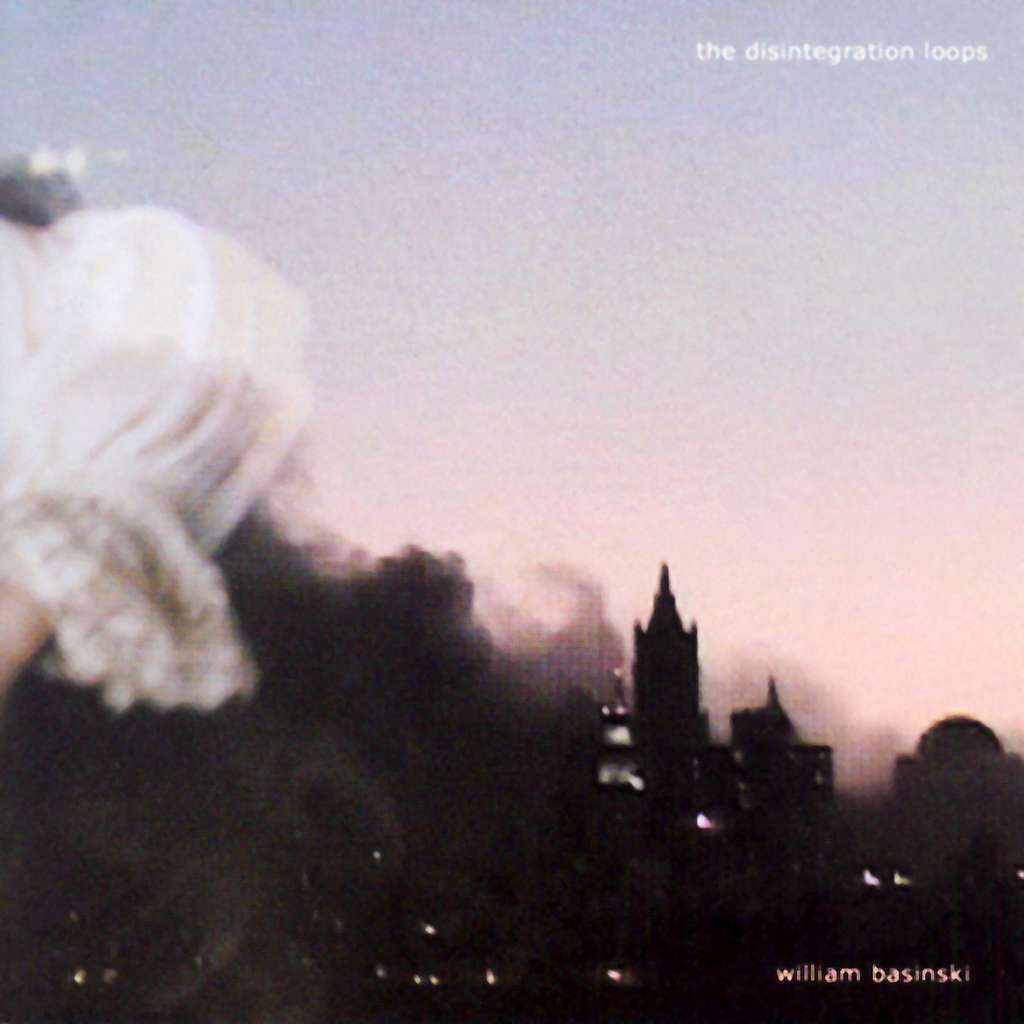
What were your musical interests when you were growing up in Houston and were you quite a "normal" child in this regard?
William Basinski: My earliest musical epiphany was being allowed to stay up late and watch The Beatles on The Ed Sullivan Show. That caused quite an explosion in all of our brains. From then on there was quite an interest in what those four boys were doing. My older brother was a record buyer. He brought home the music that we would hear. Growing up during the 60s when a new Beatles album came out, there we were on the living room floor… blasting it… taking it in turns to look at the cover. Before mom came in and told us to turn it down! [laughs] Later my brother became a guitar player and I wanted to become a guitar player too but my dad said, ‘Nah, we’re going to get you a banjo.’ And at the time I didn’t think it was a very cool idea and dropped it.
My dad worked on the space programme for NASA. So we spent part of my childhood in Houston where he was working on parts for the Apollo Lunar Module. In Texas I was taken to meet with my school’s band director. My mother wanted me to go into the choir because she said I had a nice voice, but at that time I was already getting beat up enough, so I did not want to take that. She took me to meet the band director and he was very nice and he saw something in me. He said, ‘I see you as a clarinettist.’ So he gave me a clarinet and that’s what I ended up becoming… as well as conductor and drum major and the works. I enjoyed the challenge and it gave me something to focus on.
Something odd occurred to me today. I’ve been to Houston before and went there specifically to go to the Rothko Chapel. I didn’t know you were from that neighbourhood but that’s what I thought of today when I was listening to the Disintegration Loops. Is Houston more of an arty, bohemian place than perhaps people might presume?
WB: I’ve never seen the Rothko Chapel, believe it or not. But Texas is unique… it’s a very special place. I was pretty ‘eccentric’ in High School and college, and there was a point where I wanted to get out of Texas… before they killed me! [laughs] Later we moved to Dallas and there the music departments were extraordinary. The teachers were super strong. They had amazing budgets. In Dallas music was almost like [American] football is here, with that degree of funding and energy behind it.
My parents moved us to near the best music school in the state – The Richardson High School. It had won awards. The marching band had 300 people in it. There was a symphonic band, a jazz band, an orchestra… We played very, very difficult music. After that I went to Texas State University, which was a big jazz university and I thought, ‘Well, I know how to improvise and la la la.’ This school was known for its jazz bands. In the 70s they won a GRAMMY for its top big band… and they have eight of them. Pat Metheny was in the big band when they won.
I wanted to be in that band. I auditioned but really they were full of professional musicians who were taking it easy in this small Texas town, playing jazz, smoking pot and resting between tours. So I didn’t get in any of the bands and that’s when I switched to composition. I started to think, ‘How do you compose?’ Most of the emphasis in that time was still on 12 tone or serial music, and I didn’t really have that kind of sound, but I had one great teacher who was teaching a contemporary class and he introduced me to all kinds of great contemporary music. And in particular he inspired me to learn about John Cage. This is what struck me. That gave me freedom to try a lot of different things.
Like using tape?
WB: This is where I began to experiment with tape. I took a Walkman and put some Sellotape over the erase head and would just randomly record things from the electric piano that I was working on. I got some interesting [things] out of that. And then there came a point where I met my friend James Elaine and he was someone who was a real aficionado, a real collector of records – he had everything – he always worked in record stores and he had come to town to visit. He was like the guru or king of this group of all these crazy artist people on the other side of campus. All the gay people. All the fabulous people. The Rocky Horror crowd. He was living in San Francisco, had come back to visit and they all worshiped him. He took a liking to me. No one really paid attention to what I was doing musically but Jamie wanted to hear my stuff. So I played him this piece and he thought it was extraordinary. He gave me a lot of encouragement in what I was doing, and shortly after that we fell in love.
I moved to San Francisco and started listening to all of his records and reading all of his art books and learning about art. How do you look at art; what is art; how do you think about it; how do you let it resonate… not worrying if you don’t understand it, but simply letting it resonate. I got a whole masters education from Jamie in San Francisco… in a kind of school of hard knocks style.
At that time in 1978, there were two other poles in my listening that interested me. That year I discovered Steve Reich and particularly Music for 18 Musicians. And then when I heard Brian Eno’s Music For Airports with that melancholy, and I thought, ‘Oh wow, this is… allowed?’ So I had something that I thought I could work with and I set about learning how Fripp and Eno used tape machines to create feedback loops. So I thought, ‘Ok, I can work with this. There are all these tape machines in junk stores, I can afford this.’
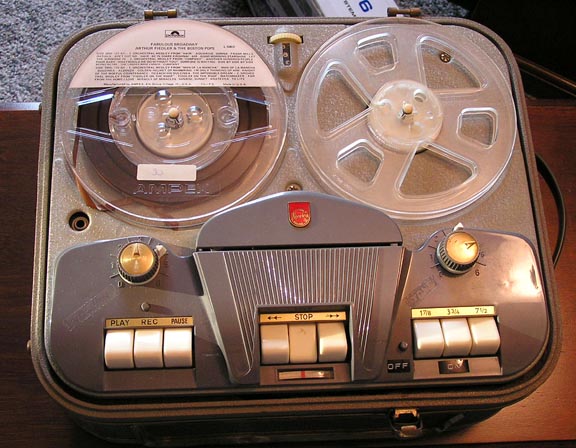
Norelco Continental picture courtesy of Gary Jordan
And what sort of equipment did you use?
WB: I started with these two big old Norelco Continentals that I still like now because they’re very simple: they’re very sturdy, they don’t have any bells and whistles on them. They were called portable but they weighed 50lbs each. They played at four different speeds. They were a precursor to the iPod, in some senses. People could make their own playlists for them. Say if you wanted to have the music go on all evening because a date was coming over – so you didn’t get interrupted by having to turn the record over – you’d put it on the slower speed and then you could put a whole evening’s worth of music on to the tape and it was ready to go. I just started cutting up tape and recording everything. The old refrigerator we had in our place in San Francisco had this amazing sound. The compressors in the freezer had such beautiful overtones. If you taped it and slowed the tape down… Oh my god! And then I rented a piano and prepared the piano and recorded that. I recorded the sounds of San Francisco. Have you ever been there John?
I have. It’s my favourite city in the States.
WB: The sounds there… I don’t know what it is. The position of the hills, the bay, the fog, the water all around it. The clicking of the electrical lines, the sound of the fog horns, the creaking of the cable car lines… it all makes for an extraordinary listening experience. It was a huge influence on my ears and way of thinking about music and listening.
Continues after image
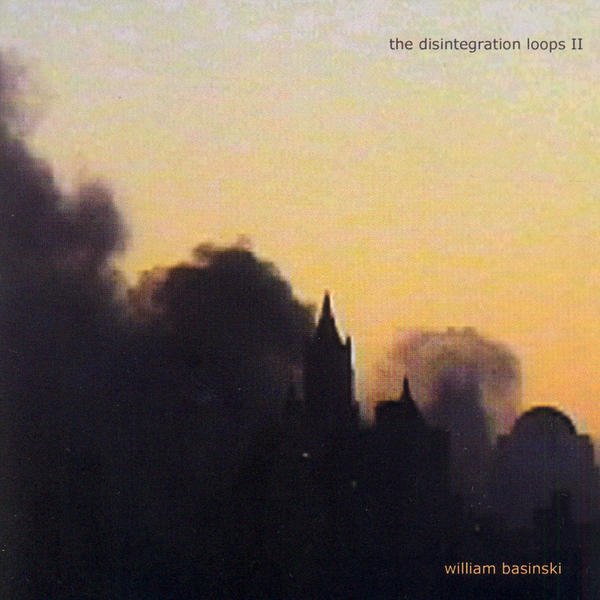
I always wonder about the loneliness people must feel when they’re breaking new ground like this… what did people make of it when you played it to them? Did they know what you were doing… or did you even play it to anyone?
WB: No! Ha ha ha! Well, we had it playing all the time where we lived but no one knew what the hell we were doing! Some people would say, ‘Oh hey, it’s like Pink Floyd man!’ There was a small group of us, James Elaine and my artist buddies, including Roger Justice. He got it. And Jamie got it. But they were painters so they were working in large scale canvasses with layers as well. We were all doing similar work together. We all ended up moving to New York in 1980 because of course you had to go to New York to ‘make it’. So we saved our money and moved to Downtown New York and got this big old 5,000 square foot loft, and just set up the paintings, set up the spaces for us [to live in], set up studios and I set up the tape decks and radio and set about discovering a new landscape in the post-industrial, wild, wild wasteland that was New York in 1980.
How many loops did you make in this period? Were you quite productive?
WB: It was a very prolific time. We had this big beautiful loft. We had to work shitty jobs, six days a week to pay the rent and afford a little weed, so we weren’t going out. We would come home and we would work. So I was having a ball. As soon as I had some results I wanted to do more, and I could do whatever I wanted because there were no rules. Just cutting up these loops and grouping them on this dead tree I found in a parking lot. I set it up on tube and hung all the loops off it. It looked like a giant brain.
There was a big radio station in New York, I think it was CBS. It was big and powerful and it was broadcast from the top of the Empire State Building. They played popular standards but the 101 Strings Orchestra versions. Muzak. The wires running across the loft for my speakers would pick up these transmissions and you could just about hear these strings coming in somewhere over nearly everything we listened to. I loved strings. I loved the Mellotron as well but I couldn’t afford to buy one. I knew essentially that when you pressed a key, it engaged a tape loop of a string sound, so I figured, ‘Maybe I can make my own funky Mellotron.’ That’s kind of what I was trying to do for a while.
I’d tune the radio in to this station, wait until something really string-y came up, either an introduction or an end or an interlude on one of these muzak numbers and I would grab a bit like a measure. Then I’d slow it down and see what I’d got. And it was really interesting because back then there was no Prozac, there were no anti-depressants, there was muzak and it was everywhere. But when you took a little piece of it and slowed it down, like looking at something under the microscope, this rich well of melancholy was exposed. And that really resonated with me.
So I found that these were the kind of textures I was interested in working with, making a tapestry with them, creating cyclic rhythms with them. And the fact that this stuff was leaking out of the airwaves, meant it felt like I was creating something out of nothing. It was one wild, mad experiment.
I would set up loops, get them going, put on the tape recorder and let it go for the length of the cassette because if it was going, it captured this eternal moment.
Why did you move to Brooklyn?
WB: [Our landlords] had been trying to move us for years and eventually they had to settle with us all and we ended up with a big settlement. We found this extraordinary beautiful ruin in Williamsburg, Brooklyn, that we went on to rent and restore, and it went on to become this beautiful, legendary, underground venue called Arcadia.
You strike me as someone who likes to be completely immersed in art, surrounded by paintings and sound art etc. Was Arcadia an extension of this aesthetic?
WB: Yeah it was. By the time we moved to Arcadia, we had a little bit of money to invest in a studio. A real proper studio with MIDI, synthesizers, the whole works. I was working on my projects there. I thought that I had to use my talents for something so I thought I would produce bands there. Arcadia turned out so beautiful that it was clear that we’d have to share it with people, so it just happened that we were turned on to young people doing interesting things. They’d come over and work on a demo and I would put together [concert] programmes. We’d do maybe four in the Winter, four in the Summer, four in the Spring and four in the Fall. They were thematic. And it became sort of like a theatre group in a way, because there was a core group of people who were featured and we’d all help with each other’s records.
What was the most exciting thing for you to work on?
WB: We had an event one night with Diamanda Galas and she was extraordinary. I think it was in 1991. She… was… fantastic. And she even said to me that she felt like it was the pinnacle of her career. I have a recording of it somewhere. Her manager wouldn’t let us film it which was a shame because we had neighbours upstairs doing three camera live, edited shoots for a period there and it would have been a really nice document but it wasn’t allowed so we couldn’t do that.
Antony [Hegarty] was someone that I discovered and encouraged to come and see me, because I wanted him to concentrate on his music and he did and we became very close friends. I helped him with his demo.
What was Antony like when you first met him?
WB: Oh, he was very much like he is now. Very particular. Very smart. His arrangements that he did on the four track, for someone who is completely self-taught, were very, very intricate and very sophisticated. So we just hit it off and he was also interested in what I was doing as well. So we encouraged each other. So in ’96 I had been asked by one of the curators at The Kitchen, a big arts space in New York to do a night and I was working on something I invited Anthony to do something so he put together the Johnsons. I played clarinet and saxophone in the Johnsons for a couple of years before I started to get too busy.
By the 90s did it feel like you were beginning to make a bit of headway. Did it feel like some people were ‘getting’ what you were doing, because at this point you had the fantastic label Raster-Noton finally release some of your earlier work.
WB: Well, no! Not yet John. It took a while longer for that to happen. It was wonderful to meet Carsten Nicolai who was a neighbour at the time. At that time I was beginning to archive this old work because I had recently gotten a CD burner and when Carsten heard some of my loops he was the first person to ask me to release a record. When [Shortwave Music] came out I was thrilled because it was so beautiful. I was really over the moon… but then it just disappeared and nothing happened! Ha ha ha!
Continues after image
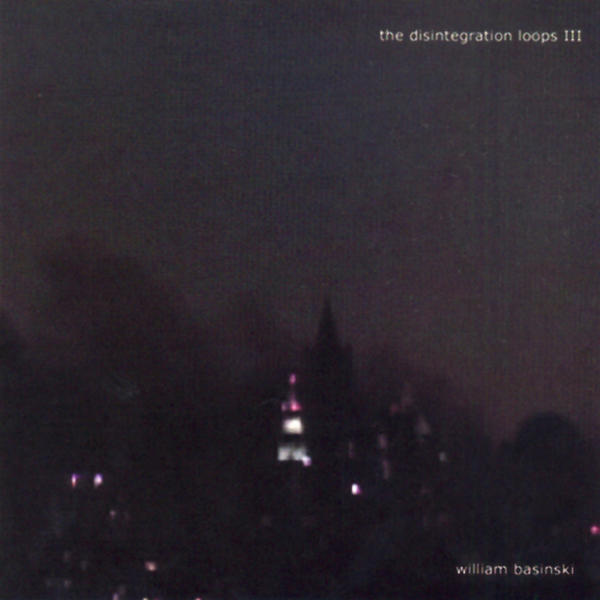
What was it in 2001 that made you think, ‘I must look through this box of old loops and transfer them to CD’?
WB: There was a room at the back of the loft that we called The Land That Time Forgot, where things got put after they got edited out of the main part of the loft, or where we stored paintings, and paint. Stuff. And I found all these big old cases that had my old work from the 80s in them. I thought I’d lost them, I didn’t know what had happened to them. I knew all about what could happen to old tape, so I knew I had to make sure that each one of these pieces ended up with a new master. So I was hearing all this old work again, and I was kind of blown away by it. It was a job that I needed to do before I lost all this work. It needed to be archived.
How long after you started digitizing these loops by leaving them running did you realise what was happening?
WB: I put the first loop on and I was blown away by this beautiful, grave, stately melody which I had forgotten. I didn’t remember it at all. Some of them I remembered. They were very distinctive, and we used to listen to them over and over. Sometimes when I was in my Mellotron making project, I would record a loop, slow it down and what I would hear would be so beautiful, so perfect that it could just play forever, it didn’t need anything added to it. But I wanted to be involved with it, because back then there was no context for what I was doing so it was kind of scary. I would think, ‘Is this mine, can I call this my work?’ So those loops tended to get bunched together to one side. So those loops [with nothing added] all turned up together in this one July 2001 session.
So I was ready for them at that point. I started tweaking the synthesizer to make a new piece, came up with the random arpeggiated French horn sounding pattern and started recording. I went to get some coffee, came back and realised that… ‘Something’s changing, what the hell is going on?’ I looked at the loop and I could see that there was dust in the tape path, the tape itself is starting to disintegrate. And I thought: ‘Oh. My. God.’ I had to check that it was really recording and it was. So I thought, ‘Oh my God, what’s going to happen?’ Over the period of the hour, that melody just decayed right in front of my ears… and eyes. So I was just… tweaking. I set up the next loop on there and they all came up in the order that they are sequenced on the records. And each of these things did their own thing in their own time. And by the time of the second piece when that started decaying, I remember thinking, ‘This is not about you. You don’t need counter melodies. Keep the recorders going and let’s see what’s going to happen here. You don’t need to add a thing.’
So over a period of six days I did those loops. And I was on the phone burning up the line, calling Antony, calling my other friends, ‘Get over here. You won’t believe what just happened.’ And then I just spent August thinking about it and thinking about it.
Between this first encounter with a decaying loop and the day you’ve already mentioned, September 10, what narrative was being suggested by the music? Were you already aware of the idea of the music suggesting mortality?
WB: Not really to me. The main theme of it to me was… the most profound thing to me immediately was the redemptive nature of what had just transpired; the fact that the life and death of each of these melodies was captured in another medium and remembered. So that was really the main thought, not so much the mortality. The transfiguration or whatever you want to call it.
So obviously the next day, the interaction that you had with this music altered indelibly after the terrible events of September 11. I was wondering if you can tell me about that day specifically with regards to the music?
WB: Well… that day was just… it started off with quite a bang. I woke up and the curtains in my room were drawn. There had been a storm the night before and these very heavy material curtains were swagged from this pole across my window, through which you could see the World Trade Center when the curtains were open. But you could see a little bit of the sky above this. And I saw a plane flying very low across the sky through this gap above the curtain. It was very strange. I’d never seen anything like that. There was a commotion at the door and it was my friend who was babbling: ‘The two towers are burning. The two towers are burning.’ I said: ‘What?’ And he said: ‘The World Trade Center is on fire.’ And I said, ‘What?!’ We ran back to my room and pulled the curtains back and the planes had just hit. My first reaction was, ‘How do you put out a fire like that? We’re going to be here for ten years, just looking at these matchsticks.’ And then I went to turn on the TV to see what was happening.
It was one of those days, many people have talked about it. The weather was extraordinary. It was a crisp clear, dry Autumn day, almost like blue screen. Then someone shouted, ‘It’s going!’ We ran back to the window and saw the South Tower crack and fall off and we just ran to the roof. Our neighbours were already up there. You could see that people were on rooftops all over Brooklyn. [pause] And then we sat there and watched the other tower going down… cascading glass… slow motion… and it was just… God. We couldn’t believe it. We were all in shock. There was no news just people babbling on the radio and idiots babbling on the television. We went downstairs and put on the music. It was like, ‘This is the greatest show on Earth. Armageddon, here we go.’
So I had this massive sound system in there. It was massive and all the windows were open. So I just put [The Disintegration Loops] on while everyone was staring at what was going on. While we tried to work out what the hell was going on. And this went on until ‘Disintegration Loop Four’ came on with its catastrophic decay and my neighbour came shrieking upstairs: ‘Turn that off!’ So we turned it down.
Later that day I went out to get cigarettes. I’d just quit smoking and I was hunting through the ashtrays on the floor of Arcadia to see if I could get an old cigarette to smoke. But I thought, ‘No, if the world’s ending I can afford to get a fresh packet of cigarettes.’ So I got a video tape because I knew my friend Peggy was on the roof with her video camera. She showed me how to frame it and we just left it recording and I said I’d pick it up in the morning. So I did and I went back to the studio and put the tape in the player and put ‘Disintegration Loop One’ with it…
All of a sudden the world had changed. It had taken on new meaning. As the days and months went by, people just cascaded into their own disintegration loops of fear, terror and anxiety. But also there was a rethinking going on about what had value. There was a lot of compassion in the public sphere amongst New Yorkers.
I decided to release the records as an elegy. I would release them myself one at a time because I couldn’t afford to produce a box set and no one knew who I was anyway. It would have been too much but I felt that each one had plenty of music on it. I got the artwork done, which was a still from the video on each. David Keenan is a friend of David Tibet’s and he wrote that wonderful review in The Wire that came out, ten years ago in August, and that just sort of launched it. Then a couple of years later Pitchfork wrote that wonderful review. And then the next day my in box was full of orders… and I didn’t even know what Pitchfork was! [laughs] So since then I’ve been trying to put out a record or tour every year but I haven’t done anything for two or three years because I’ve been so busy.
A lot of art was produced in the wake of September 11, 2001, which is very understandable, but The Disintegration Loops seems to have been taken to heart by a lot of people. How did it become involved with the 9-11 Memorial & Museum?
WB: Michael Shulan is a very creative man. He insisted on buying the video for the museum and he was turned on to the piece by his son. He talked him into featuring this piece. The video is so intense but I think that it is the perfect place for it.
So we’ve got forward looking neo-classical ensembles like the German group Zeitkratzer doing performances of things like Lou Reed’s Metal Machine Music – so it’s not entirely unheard of but it’s still pretty remarkable that you’ve managed to get an orchestral version of The Disintegration Loops arranged for live performances recently. What difficulties did Maxim Moston face preparing this for an orchestra?
WB: Max is a genius. I left school to play with tape loops, I never studied orchestration and there are so many technicalities involved in writing for orchestra that you have to know which I don’t know. There are some very subtle things that are in the charts that he did. Also the young conductor that we use, Ryan McAdams, is brilliant. And they use charts to stop the piece from becoming redundant. Tiny tempo changes and things like that. Some of the things that Max chose to evoke the bits of crunch left on the tape when all the melody is gone, he had one of the percussionists unspooling and crunching up a roll of cling film and he also had written on the score: "Popcorn on the side of the drum skin" and things like that.
It must have been an emotional experience for you to see it performed at the Met [Museum Of Art]?
WB: Oh, it was like a dream come true. It just made the hairs on the back of my arms stand on end now just thinking about it! The [2,000-year-old Egyptian monument and Met exhibit] Temple of Dendur is beautiful, it is in a new wing with huge, huge ceilings, in a room that maybe measures about 50,000 square foot. It has these huge, frosted glass windows. And that day it was overcast and the light was very muted and when they finished the piece the room was in stunned silence for three minutes and there were children there. It was amazing. And then this plane or motorcycle went by making the same note, the same drone. And I was thinking, ‘Oh my God, what’s going to happen now?’ And then the whole place just erupted into applause. It was extraordinary. And then the same thing happened at Queen Elizabeth Hall. I think we tried to outdo New York there. It was as if there was an orchestral version of John Cage’s ‘4’33"’ added to the end of it. The silence became something to listen to. The silence was amazing.
Now it’s 11 years after you first heard them, do you get anything different from The Disintegration Loops?
WB: They still blow my mind in the same way, but I don’t listen to them all that much any more. They’re just organic. They’re from another world. I don’t know… they just do something. They always do. I can just fall into them.
And obviously you’ve been doing other things since then. I was wondering if you could tell me about Vivian & Ondine.
WB: Yeah, Vivian and Ondine was the last record I put out, and I finished it a couple of summers ago. I was in New York in my studio and I found this little lunch box that I hadn’t checked out yet but it had a bunch of loops in it. I had just talked to my youngest brother in Texas and his wife was pregnant with Vivian. Vivian was overdue and it was Summer in Texas… hot. So when I put on this loop immediately I heard the theme to Vivian And Ondine and I thought, ‘Ok, well maybe we can encourage Vivian to come out.’ I said to them, ‘Well, Vivian is a movie star name, so I think people will have to get used to waiting on her.’
I ended up working with one loop and editing other loops under it, there was about twelve of them I could use as counter melodies, just bringing them up under the threshold and letting them resonate. When I got to the studio, the young sound designer Steven had made these sixteen sound channel hemispherical speakers and hung them all along the ceiling. He was able to pinpoint sound in three dimensional space. And this was much more complicated than anything I’d ever done before so I asked Steven, ‘Can you make it wash around the room like water in a pool?’ He was like, ‘Totally!’ He set his system up to do that and the room sounded like an amniotic pool. The next morning I heard that Vivian was born and her little cousin in Hawaii, Ondine was born. So these two beautiful girls were born and they had such beautiful names it just had to be the name of the piece.
The deluxe box set of The Disintegration Loops includes nine vinyl records, five CDs, a full length DVD and a 144 page full colour coffee table book with liner notes by Antony, David Tibet and others and is out now
